
Cuculliinae is one of the larger subfamilies of moths in the family Noctuidae.
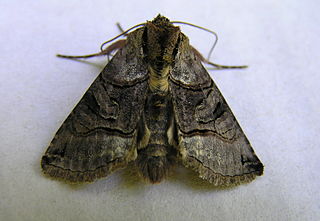
Abrostola tripartita is a moth of the family Noctuidae. It is found throughout much of the Palearctic realm including all Europe, Russia, Siberia Amur, Kyrgyzstan, and Kazakhstan.

The large ranunculus is a moth of the family Noctuidae. It is found in Europe and North Africa.

Emmelia trabealis, the spotted sulphur, is a moth of the family Noctuidae. The species was first described by Giovanni Antonio Scopoli his 1763 Entomologia Carniolica.
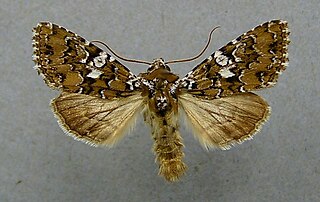
Hadena albimacula, the white spot, is a species of moth of the family Noctuidae. It is found in Europe.

Polymixis polymita is a moth of the family Noctuidae. It is found in most of Europe, but not in the Benelux, Britain, Ireland and the Iberian Peninsula.

Antitype is a genus of moths of the family Noctuidae. The genus was erected by Jacob Hübner in 1821.
Ecbolemia was a genus of moths of the family Noctuidae. It is now considered a synonym of Scythocentropus. It contained four species, which are all transferred to other genera or placed in synonymity.
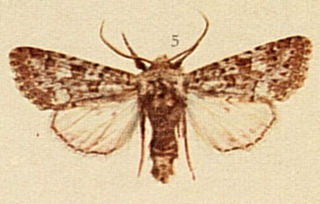
Eumichtis is a subgenus of moths of the genus Polymixis, and the family Noctuidae.

Polymixis is a genus of moths in the family Noctuidae.

Amyna axis, the oriental eight-spot, is a moth of the family Noctuidae. The species was first described by Achille Guenée in 1852.

Polymixis xanthomista, the black-banded polymixis, is a moth of the family Noctuidae. The species was first described by Jacob Hübner in 1819. It is found in western Europe, southern Europe and east to Romania, Hungary and Slovenia and also in North Africa. In the Alps it can be found at up to 2000 metres above sea level.
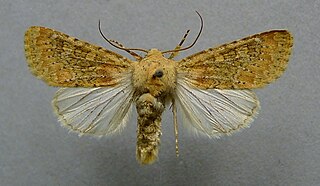
Polymixis argillaceago is a moth of the family Noctuidae. It is found in south-western Europe and the Maghreb countries.

Polymixis lichenea, the feathered ranunculus, is a moth of the family Noctuidae. It is found in western Europe and Morocco. It is mainly found in coastal areas.
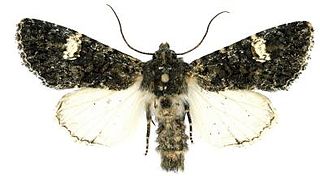
Polymixis serpentina is a moth of the family Noctuidae. It is found in Italy, the Balkan Peninsula and Crete.

Polymixis iatnana is a moth of the family Noctuidae. It is found on Cyprus.

Hoplodrina superstes, also known as the powdered rustic, is a moth of the family Noctuidae, first described by Ferdinand Ochsenheimer in 1816. It is found in Asia and Europe.

Chaetaglaea rhonda is a moth in the family Noctuidae. In Canada, it is presently known only from dunes along the shore of Lake Huron in Lambton County, Ontario. In the United States, it is known from Carolina Beach State Park, New Hanover County, North Carolina. It is expected that the species occurs in suitable habitats up and down the Atlantic seaboard.

Ichneutica virescens is a moth of the family Noctuidae. It is endemic to New Zealand, and is found in the southern North Island and throughout the South Island. The species is found in alpine, sub-alpine, and down to sea-level in grassland habitats. Adults are on the wing from November through to April. The likely larval host may be grasses, but larvae have been reared on a range of plants. The adults are similar to I. panda, I. falsidica and I. nobilia, but is distinguished by size, wing colouration, and antennae formation.



















